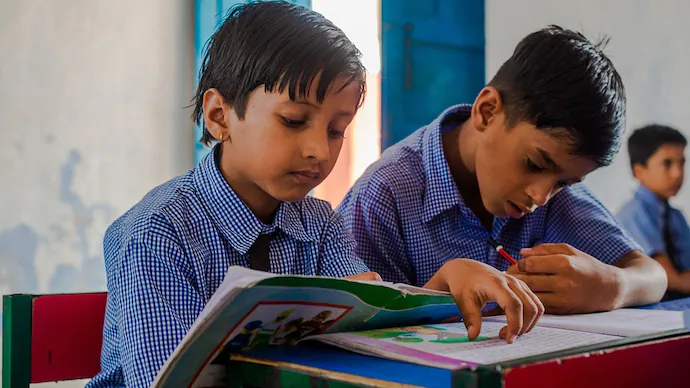Delhi Government’s Shift in Educational Policy: Replacing AAP’s Programs with New Initiatives

In a significant overhaul of Delhi’s education landscape, the newly formed BJP-led Delhi government has announced the discontinuation of several flagship education programs introduced by the previous Aam Aadmi Party (AAP) administration. This move, which marks a clear departure from the policies of the past decade, has sparked debates among educators, parents, and policymakers about the future of school education in the national capital. The BJP government has promised to replace these programs with its own initiatives, aiming to align the education system with its vision for a "Viksit Delhi" (Developed Delhi). This article delves into the details of this transition, the programs being phased out, the new initiatives being introduced, and the potential implications for Delhi’s students and schools.
The AAP Legacy: Flagship Education Programs
The AAP government, which ruled Delhi for nearly a decade until early 2025, placed education at the forefront of its governance agenda. Under the leadership of former Education Minister Manish Sisodia and later Atishi, the AAP introduced several innovative programs aimed at improving learning outcomes, fostering holistic development, and bridging educational gaps in government schools. Among the most prominent were:
- Happiness Curriculum: Launched in 2018, this program sought to integrate mindfulness, emotional well-being, and ethical values into the school curriculum. It included activities like meditation, storytelling, and reflective discussions for students from kindergarten to Class 8, aiming to create a positive learning environment.
- Business Blasters: Introduced in 2021 for students in Classes 11 and 12, this initiative encouraged entrepreneurial skills by providing seed funding and mentorship for student-led startup ideas. It was designed to prepare students for real-world challenges and promote innovation.
- Mission Buniyaad: A foundational learning program launched in 2018, Mission Buniyaad focused on strengthening basic literacy and numeracy skills for students in Classes 3 to 8 who were lagging behind grade-level expectations. It involved after-school classes and targeted interventions.
These programs were widely celebrated by AAP supporters as transformative steps that elevated the quality of education in Delhi’s government schools, often drawing comparisons to private institutions. The Happiness Curriculum, in particular, gained international attention, with educators from other countries visiting Delhi to study its implementation.
The BJP’s Decision: A New Direction
Following the BJP’s victory in the Delhi Assembly elections in February 2025, the new government wasted no time in signaling a shift in policy. On March 28, 2025, reports emerged that the BJP-led administration, under Chief Minister Rekha Gupta and Education Minister Ashish Sood, had decided to discontinue all of AAP’s flagship education schemes. Posts on X and news outlets like PTI confirmed that programs such as the Happiness Curriculum, Business Blasters, and Mission Buniyaad would be phased out, with the government planning to introduce its own set of initiatives.
The decision has been framed by the BJP as part of its broader agenda to modernize and streamline Delhi’s education system. Education Minister Ashish Sood, speaking during the ongoing Delhi Assembly Budget Session, emphasized that the new programs would focus on practical knowledge, technological integration, and moral education—areas the BJP believes were inadequately addressed by the previous administration. “We are committed to building an education system that prepares students for the future while rooting them in our values,” Sood stated, as reported by Hindustan Times.
New Initiatives on the Horizon
While specific details of the replacement programs are still unfolding, recent announcements and budget allocations provide insight into the BJP’s educational priorities. The Delhi Budget 2025-26, presented on March 26, 2025, allocated ₹19,291 crore to the education sector—an 18% increase from the AAP’s 2024-25 budget. This substantial investment underscores the government’s intent to leave its mark on Delhi’s schools. Key initiatives include:
- Science of Living: Announced on March 27, 2025, this new course will be introduced for students from kindergarten to Class 10. According to officials from the State Council of Educational Research and Training (SCERT), it will incorporate yoga, mindfulness, stretching exercises, and lessons on elderly care and self-help. While it shares some similarities with the Happiness Curriculum, it appears to emphasize physical and practical life skills over emotional well-being alone.
- Rashtraneeti: A program aimed at providing “practical” knowledge of governance, democracy, active citizenship, and policymaking, Rashtraneeti will be rolled out across all classes. This initiative reflects the BJP’s focus on instilling nationalistic values and civic awareness among students.
- New Era of Entrepreneurial Ecosystem and Vision (NEEEV): Set to replace Business Blasters, NEEEV will target students in Classes 8 to 12. With a proposed budget of ₹50 crore, it aims to foster entrepreneurial skills through new activities, though specifics remain unclear. Unlike its predecessor, NEEEV is expected to align with CBSE norms and integrate technology-driven learning.
- Infrastructure and Incentives: The government has also pledged ₹50 crore for 175 new computer labs in government schools and ₹7.5 crore to provide free laptops to 1,200 top-performing Class 11 students based on board results. Additionally, ₹100 crore has been earmarked for opening 60 new “CM Shri” schools in the 2025-26 session, modeled after the central government’s PM Shri scheme.
Implications for Delhi’s Education System
The replacement of AAP’s education programs with BJP’s initiatives signals a philosophical shift in how Delhi’s government schools will operate. The AAP’s focus on emotional well-being and foundational learning is giving way to a BJP-led emphasis on practical skills, technology, and civic values. While the increased budget and infrastructure investments are promising, the success of this transition will depend on effective implementation—a challenge that has plagued educational reforms in India historically.
For students, the immediate impact may be one of adjustment. Teachers will need training to adapt to the new curricula, and students accustomed to programs like Business Blasters may find NEEEV’s approach unfamiliar. The discontinuation of Mission Buniyaad could also leave a gap in support for struggling learners unless the new programs address foundational skills equally well.
Conclusion
The Delhi government’s decision to replace AAP’s education programs reflects the dynamic nature of policymaking in a politically charged environment. As the BJP seeks to imprint its vision on Delhi’s schools, the coming months will be critical in determining whether these changes elevate the education system or stumble amid logistical and ideological hurdles. For now, stakeholders—students, parents, and educators alike—are watching closely, hopeful yet cautious about what lies ahead for the capital’s classrooms.
As of March 29, 2025, the contours of this educational shift are still taking shape, but one thing is clear: Delhi’s schools are entering a new era, one that will test the resilience and adaptability of its young learners and the system that serves them.
